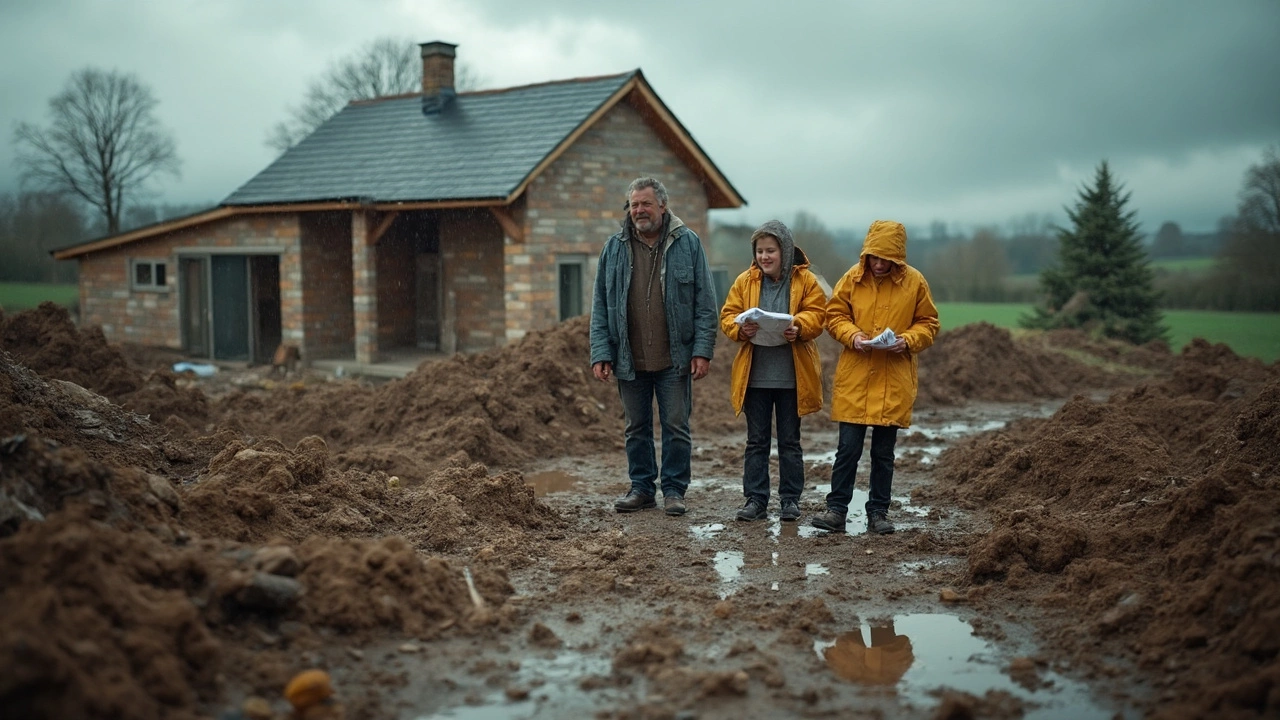Construction Delays: Why They Happen and How to Keep Your Garage Door Project on Track
If you’ve ever waited for a new garage door and the work kept slipping, you know how frustrating delays can be. They waste time, cost extra money, and can throw off the whole house plan. The good news is most delays aren’t mysterious – they usually stem from a few predictable problems. Knowing those problems and how to handle them can save you headaches and keep the project moving.
Top Reasons Projects Get Stuck
First, weather is a big one. Heavy rain, snow, or even extreme heat can halt concrete pours, steel welding, or the precise fittings needed for a garage door system. It’s not just the rain – cold temps can make some materials brittle, forcing the crew to pause until things warm up.
Second, missing or wrong materials slow everything down. If the supplier delivers the wrong size door panel or a faulty motor, the installer can’t finish the job. That often means a re‑order, which adds days or weeks.
Third, permits and inspections are often overlooked until it’s too late. A missed sign‑off from the local council means the work has to stop while paperwork is sorted. This is especially common in new builds where the garage door is part of a larger project.
Fourth, coordination between trades can fall apart. The carpenter might finish framing before the electrician is ready, leaving the garage door frame exposed to the elements. When each trade doesn’t know the other’s timeline, the whole schedule slips.
Finally, budget cuts and changes in design frequently cause delays. If a homeowner decides to upgrade the door material mid‑project, the crew has to adjust plans, order new parts, and sometimes redo work that’s already done.
Practical Tips to Reduce Delays
Start with a realistic timeline. Ask your contractor to break the project into clear steps and give you a buffer for weather or material issues. A good rule of thumb is to add an extra 10‑15% of time to the original estimate.
Keep communication open. Schedule weekly check‑ins with the project manager and ask for updates on material deliveries and permit status. A quick call can catch a problem before it becomes a week‑long hold‑up.
Order materials early. Once the design is approved, place orders for doors, hinges, motors, and any custom parts. Confirm delivery dates and ask the supplier for a backup if something goes wrong.
Stay on top of permits. Before any work begins, double‑check that all necessary approvals are in place. If you’re unsure, ask the contractor to handle the paperwork and keep you in the loop.
Coordinate trades yourself if you can. Even a simple shared calendar showing when the carpenter, electrician, and installer will be on site helps prevent overlap and idle time.
Finally, be flexible with design choices. If you love a premium finish but it’s causing a delay, consider a comparable alternative that’s readily available. Small compromises can keep the project moving without sacrificing quality.
Construction delays are annoying, but they’re rarely unavoidable. By understanding the common culprits and staying proactive, you can keep your garage door installation on schedule and avoid extra costs. The next time you hear “we’re delayed,” you’ll know exactly what to ask, how to respond, and most importantly, how to get the job back on track.

Cons of Building a House: What to Expect Before You Start
May 23, 2025, Posted by Damon Blackwood
Thinking about building your own house? It's not all shiny new floors and open layouts. This article breaks down the biggest drawbacks to building a home from scratch. You'll get real talk about delays, budgets going haywire, and the stress that comes with every little decision. Discover how unexpected issues can hit your wallet and what surprises could pop up along the way. If you want to dodge rookie mistakes, you’ll want to know what might trip you up.
MORESEARCH HERE
Categories
TAGS
- foundation repair
- commercial construction
- construction
- new builds
- home improvement
- home renovation
- bathroom renovation
- construction materials
- home foundation
- renovation tips
- residential construction
- building types
- contractor
- foundation cracks
- home construction
- architectural services
- building codes
- construction differences
- home inspection
- kitchen installation